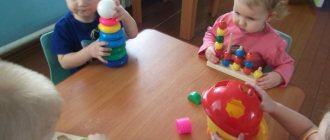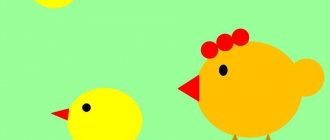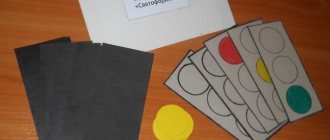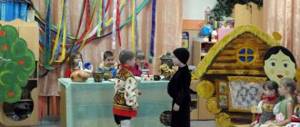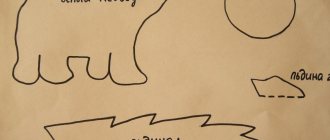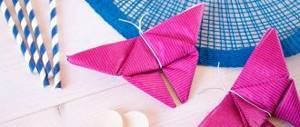Origin of the tumbler
It is believed that the tumbler came to us from Japan. There it had a round shape and was called Daruma. It was believed that such a doll brings good luck. Darumas with unpainted eyes were sold or given as gifts. When making a wish, the Japanese painted over one of the doll’s eyes, and when it came true, he painted over the second. Our Vanka regained his head and appeared at fairs at the beginning of the 19th century.
This Vanka was turned out of linden on a lathe, a lead weight was inserted into the lower part and the doll was painted with bright colors. It would seem, how else can you improve the simplest ball with a load? Engineering thought has reached Vanka-Vstanka.
Tumbler in action
The tumbler effect finds its application in everyday life.
Here is a non-tipping mug for children, in which the pacifier will not lie on the table. A watch that will always be in a vertical position.
Or an iron, which is difficult to forget on an expensive dress, because it rises to a non-working position as soon as you let it go.
But here is an unusual case for a mobile phone, which is more difficult to lose in the surrounding space, because it, like a float, tends to take a vertical position.
Facts and legends
The toy owes its origin to the mysterious East. Legend claims that the prototype of “Vanka-Vstanka” was an ancient man who observed a vow of silence and immobility for a decade, as a result of which he lost his arms and legs. Then the tumbler doll, the description of which is found in ancient books, came to Japan, which had been isolated from the rest of the world for a long time, receiving the name “darum” after the name of the hermit monk. The toy is credited with the ability to make wishes come true. Eyes are not drawn on the face. The recipient of a daruma draws one eye, making a wish; its fulfillment is marked by the other eye. Otherwise, the tumbler is burned, following traditions, on the eve of the next New Year. Travelers brought this original children's entertainment, which has become a favorite for many generations, to Europe and Russia.
The Russian version received a head, a cheerful smile, and national clothes. A headdress and a musical instrument appeared. The stabilizing abilities and noise effects were appreciated. Soviet industry made mass production of “Vanka-Vstanka” for many years.
How is a tumbler useful for children?
Vanka-Vstanka is a toy that a child becomes familiar with as soon as he learns to sit. The baby practices distinguishing sounds, gets ideas about the appearance and variety of everything that comes into view, and tries to name objects.
Older children use the doll to play “mother-daughter” or as a sentry to guard the “state border.” Games that have a plot and roles are invaluable for language development. There are also specially designed exercises for the speech development of children. For example, description: Vanka-Vstanka dolls, nesting dolls, cats, dogs. You can describe anyone, but the baby is more willing to complete the task if it is interesting to him. And a bright, colorful doll, which also does not fall, spins or dances, has attracted the interest of more than one generation of children.
How to make a roly-poly at home?
You can make your own roly-poly from eggs, paper, cardboard or a ping-pong ball.
Tumbler made from an egg
Before you start working, you should stock up on the egg itself, screws and nuts (or other weighting materials), and also prepare a candle. A small hole is made in the egg through which the contents are poured. The empty egg must be washed.
A weighting agent is poured inside the egg, which is fixed with paraffin. Paraffin drips from a burning candle held over the hole of the egg. After the paraffin has hardened, the toy is turned over and decorated (eyes, nose, mouth are attached, or a pattern is simply applied).
Vanka-stand made of cardboard
To make such a tumbler, in addition to paper or cardboard, you will need a metal ball, gauze, scissors and glue. The length of the sheet should be eight times the diameter of the ball, and the width should be three or four times the diameter. If cardboard is used, then a square with a side equal to the diameter of the ball multiplied by four is sufficient.
A “pipe” is glued together from paper or cardboard. It is necessary to ensure that the distance between the inner walls of the “pipe” and the ball is approximately one millimeter.
The edges are covered with gauze (it should be convex) so that the ball can only roll out of the pipe halfway. Then you need to let the glue dry, and the funny capsule is ready.
Ping pong ball toy
The algorithm of actions here is the same as with an egg (a weight is placed inside the hole made and filled with paraffin), only the head is glued to the top of the ball. It can be cut out of paper.
Bright, colorful, brilliant in its simplicity, the Vanka-Vstanka toy is a true friend of little ones.
A smiling face, round blue eyes, a bright outfit and an amazing ability to return to its original position. Grandparents of today's hyperactive toddlers, cheerfully and surprisedly trying to knock over their favorite toy, remember very well the “Vanka-Vstanka” of their childhood. The tumbler doll was one of the first entertainments for several generations. Today's "somersaults" can differ significantly in appearance, but bring the same joy. You can make a toy with your own hands. Available materials, a small amount of time, imagination - the tumbler doll toy is ready.
Fantasy and creativity
A huge assortment of factory-made toys, bright and cheerful, expensive and not so expensive, makes it possible to please your child with an interesting, non-boring gift. A do-it-yourself tumbler will bring pleasure not only to the child, but also to the mother. Older children can be involved in joint work, the process will strengthen family friendship. The base of the toy will be any hollow vessel with a round bottom. The best option is the body of everyone’s favorite chocolate egg. Having secured a weight to the bottom of the vessel, the plastic container is filled with beads of different sizes, materials, and weights. The result is a wonderful rattle. The outside of the toy is covered with bright shreds and painted with cheerful colors.
Those who like to craft from wood can carve a hollow toy from suitable wood, install a sinker, decorate it, and varnish it. Such a souvenir will be an excellent gift not only for a small child, parents will be happy to receive a masterpiece specially made with their own hands.
An original figurine for the holiday is made from an ordinary eggshell. The insides are blown out or poured out, the resulting container is washed, a small weight (nut, heavy bead) is carefully lowered down, and secured with wax or paraffin. The first method: drip with a candle until the entire weight is covered, the second: finely chop the wax, pour it in and warm it over a low flame, after securing it in the correct position. When the base has hardened, draw a smiling face, put on the finished hat, cap, bow - a unique gift is ready.
Types of tumblers and their principle of operation:
Tumblers can be very different, since this toy is known in many nationalities, it has a great variety of names, not to mention the forms (Figure No. 1) and modifications.
Figure No. 1 – Options for tumblers
Although, no matter what you call the tumbler, what wrapper you put it in, no matter how you paint it, the principle of operation is the same for all of them.
The design of the tumbler is simple and straightforward. As a rule, this is a pear-shaped body inside of which a weight is attached to the bottom - it is this that returns the tumbler to its original position (Figure No. 2).
Figure No. 2 – Sketch of a tumbler
